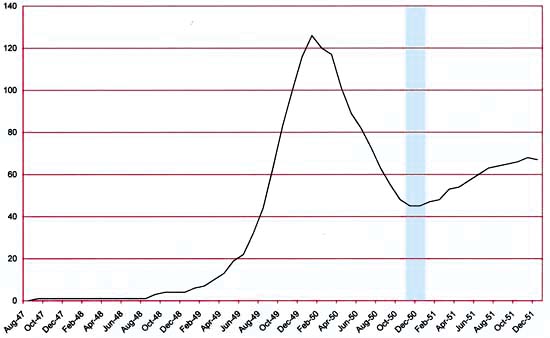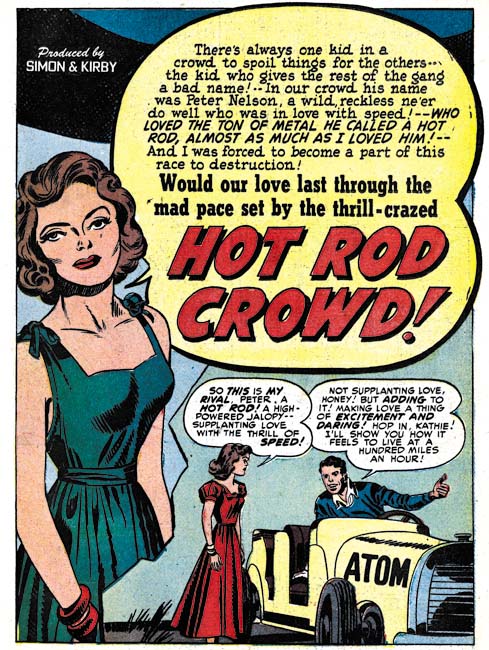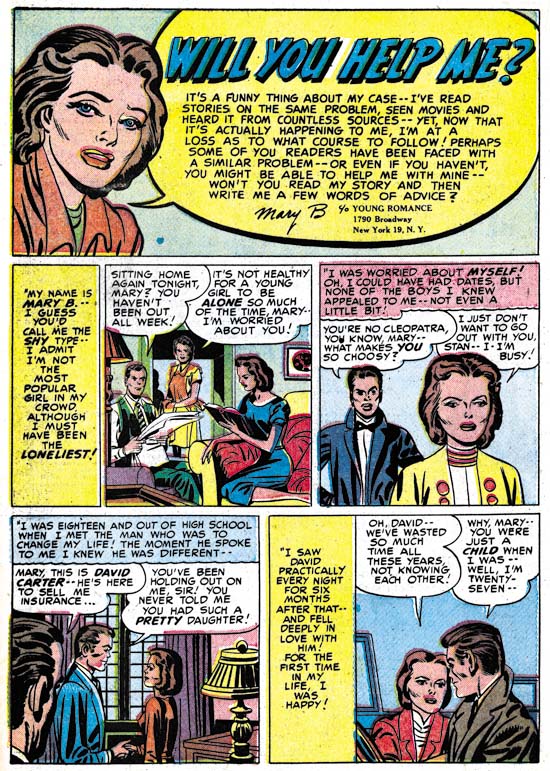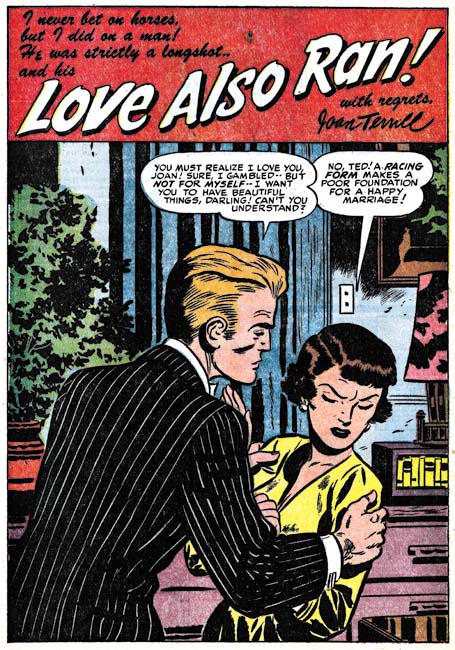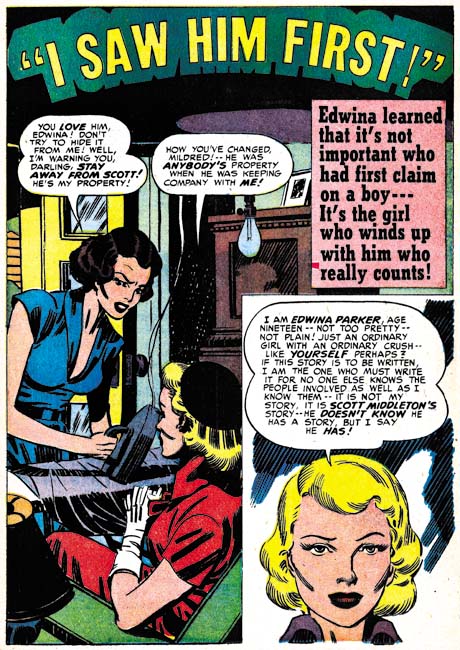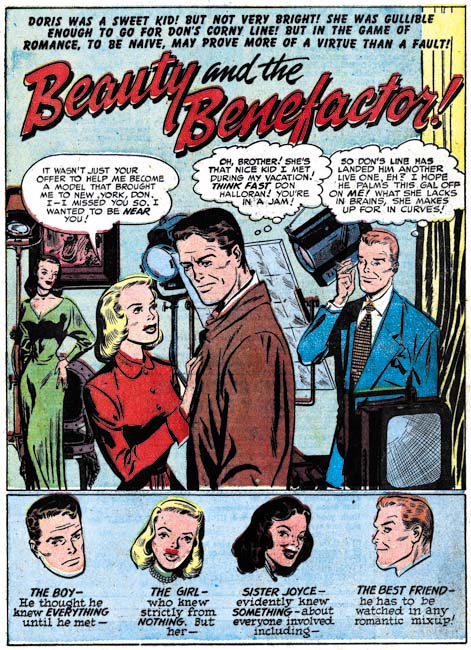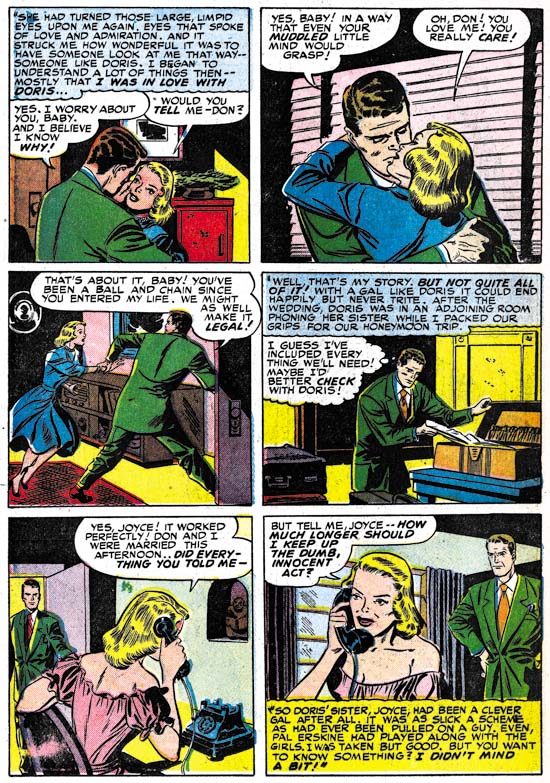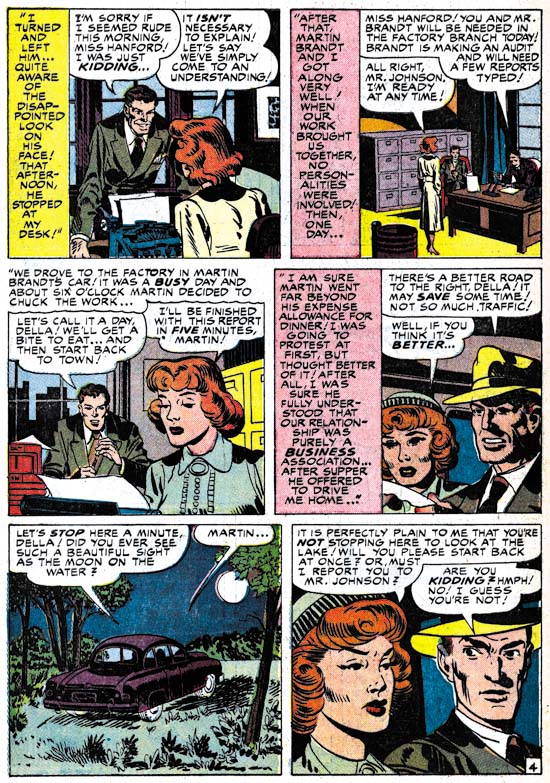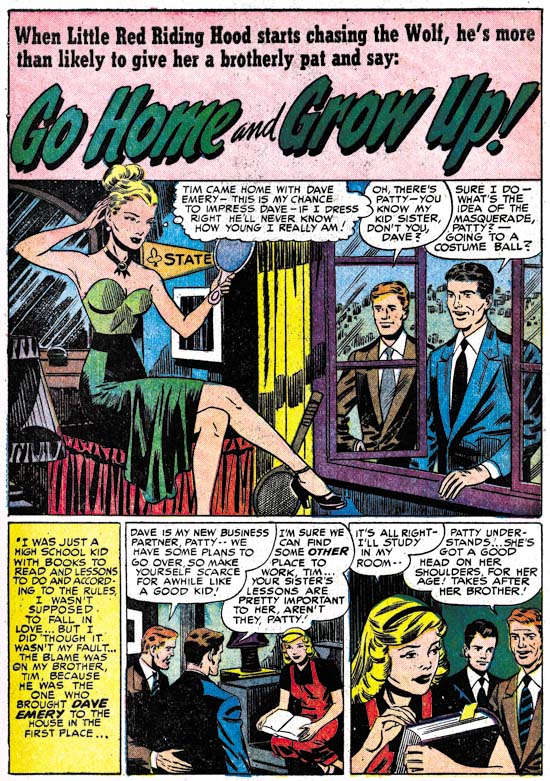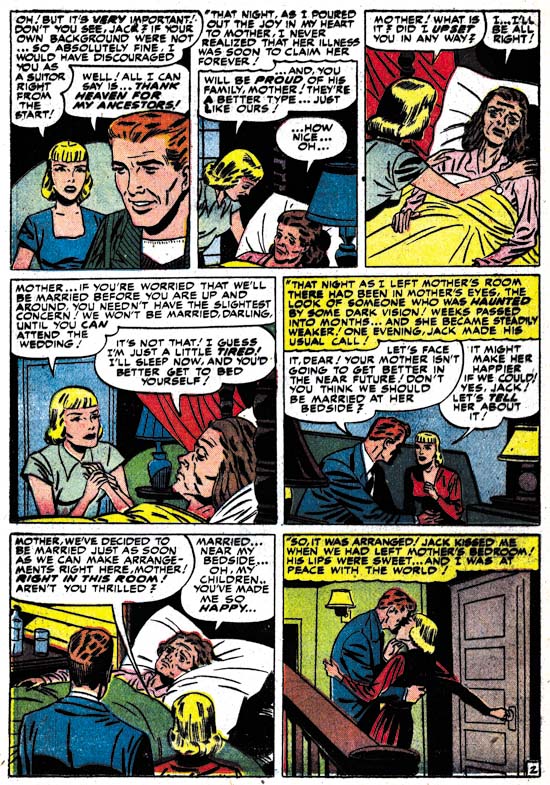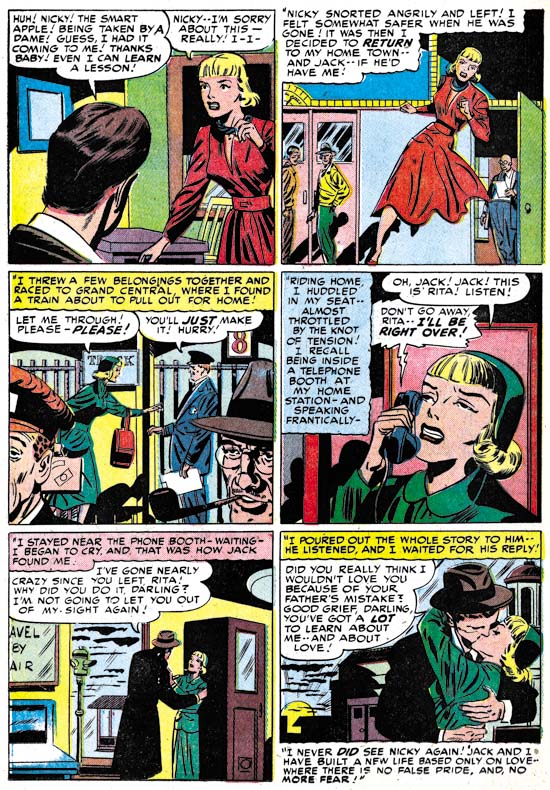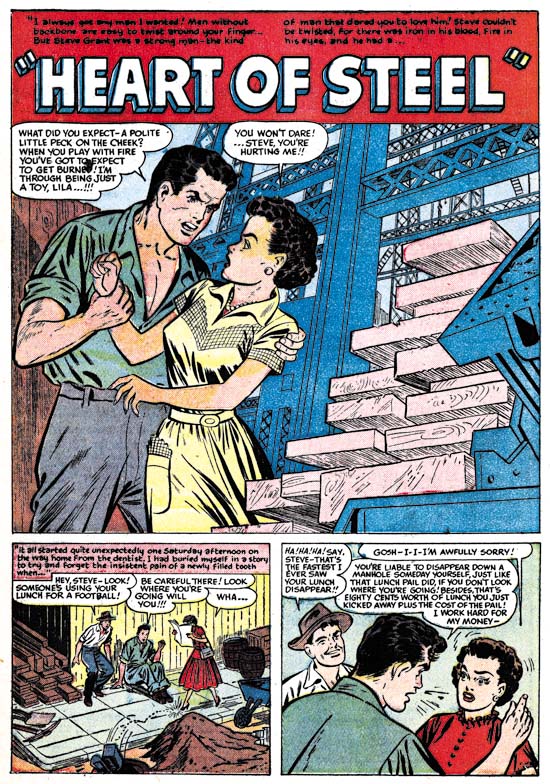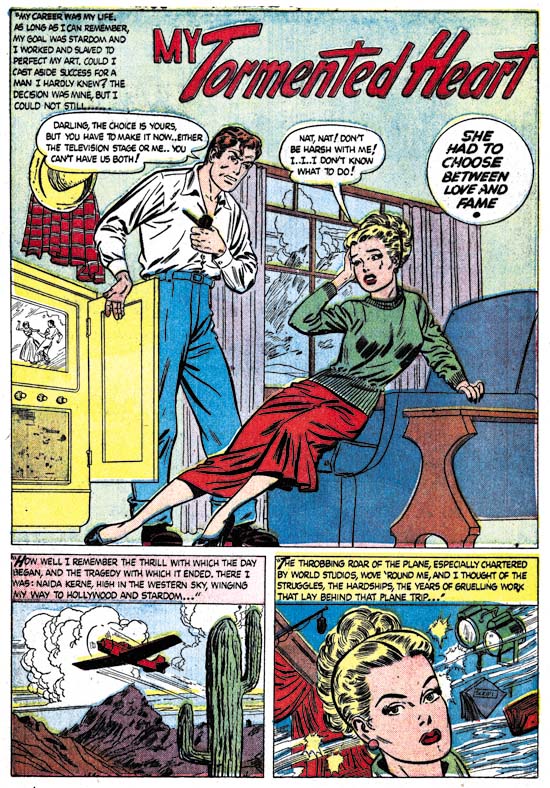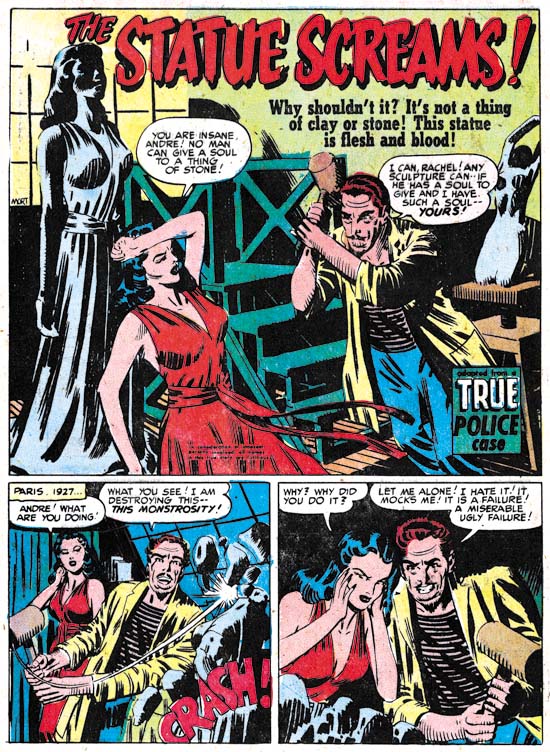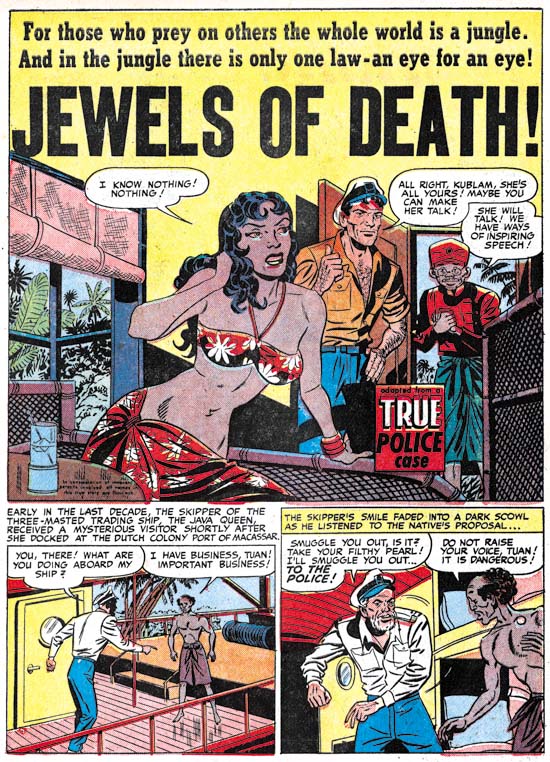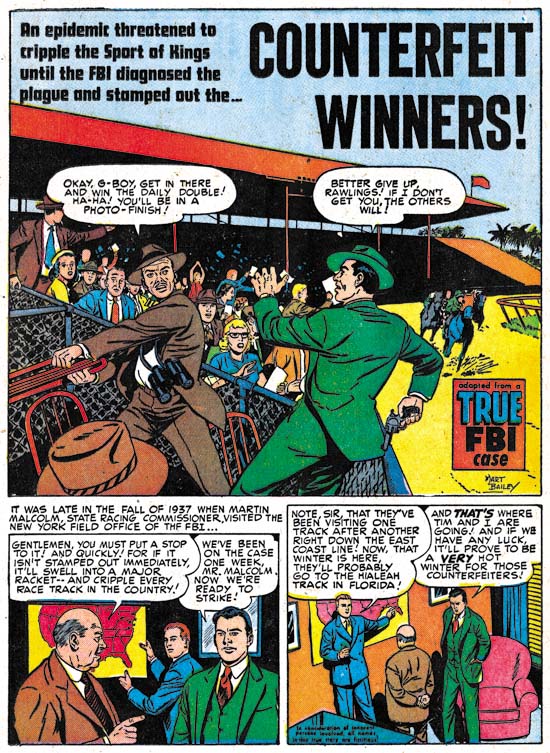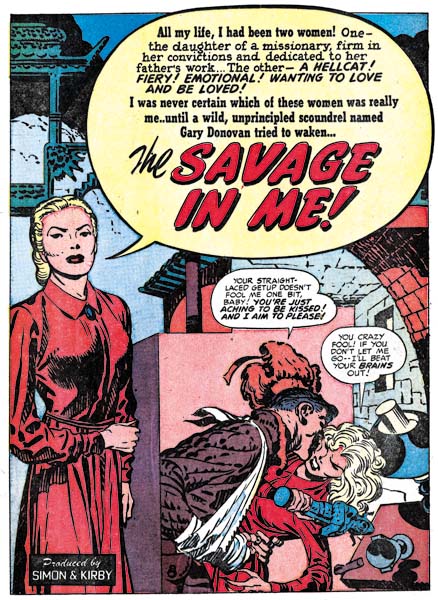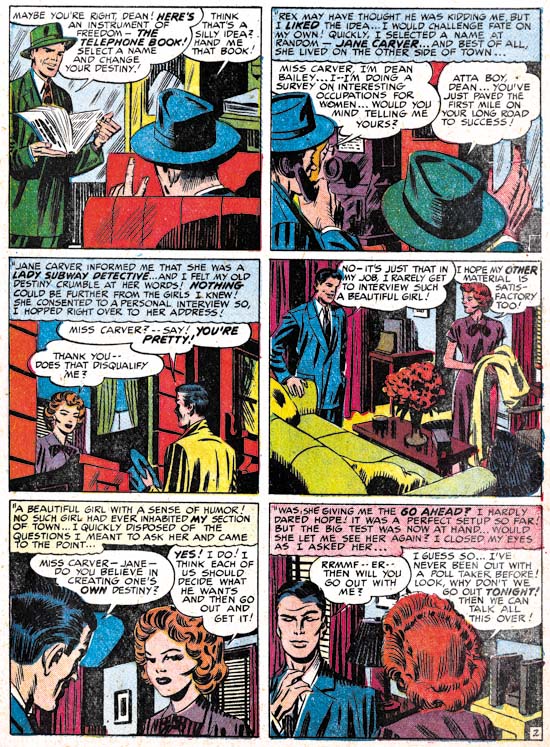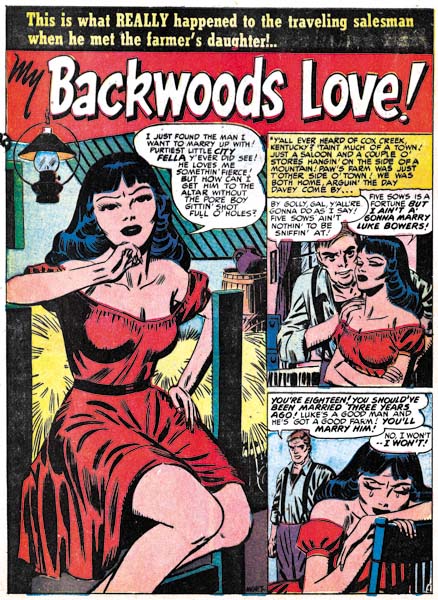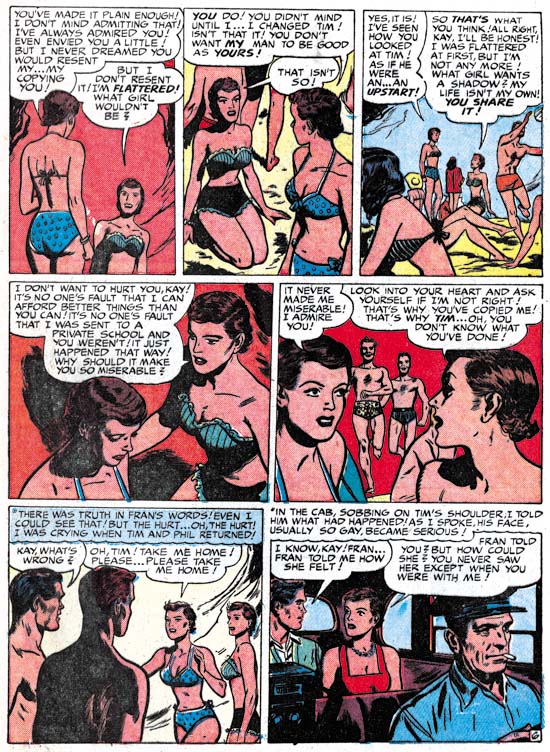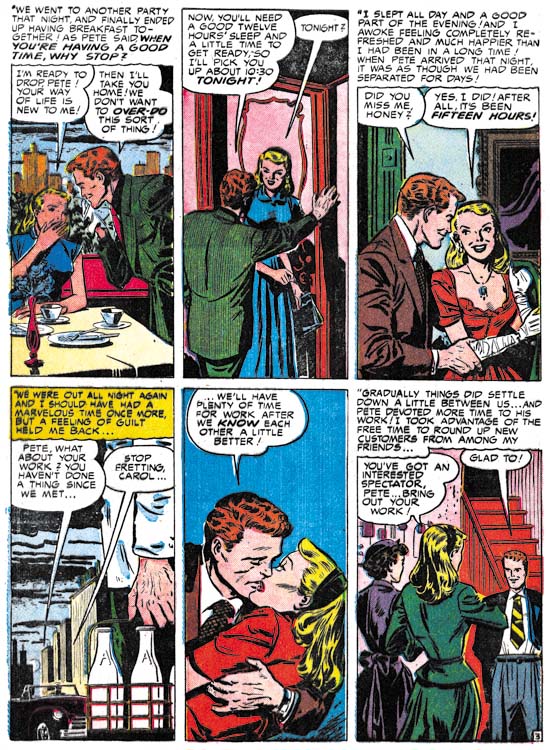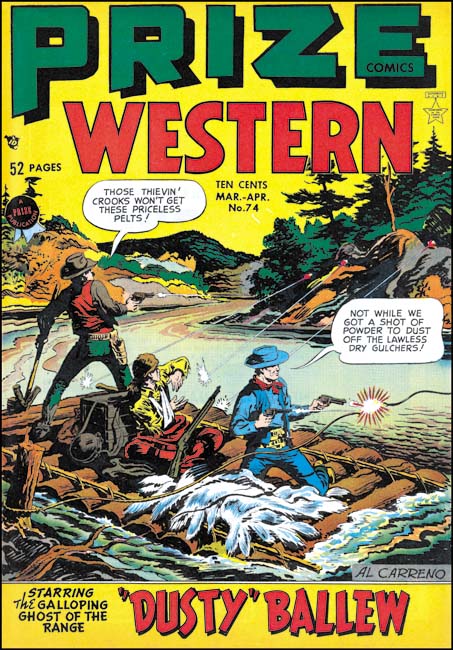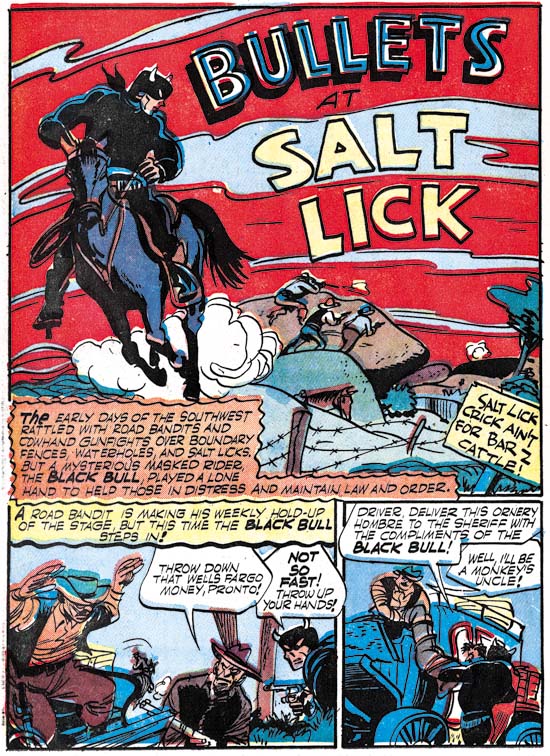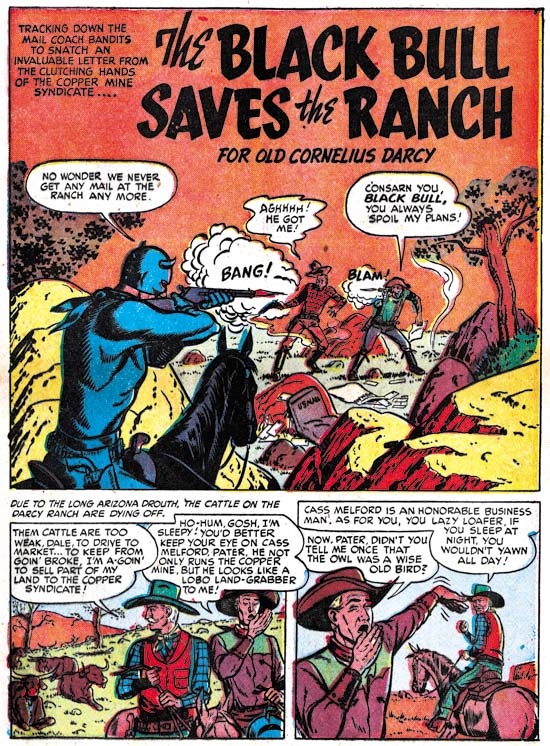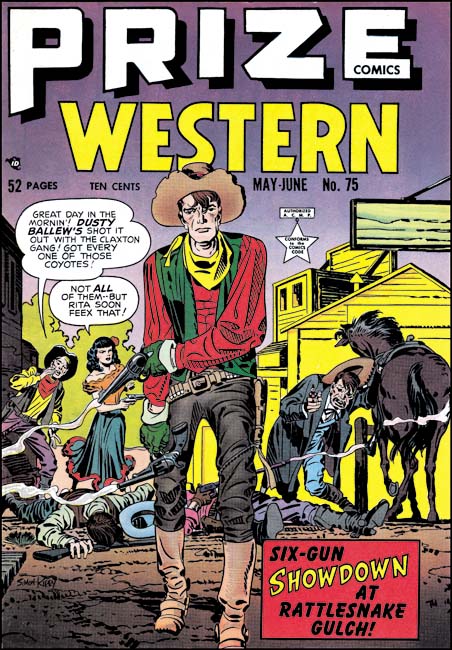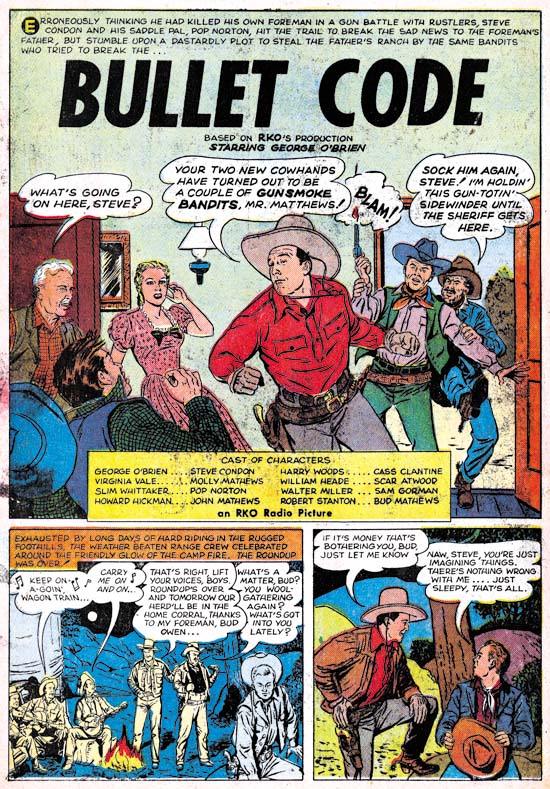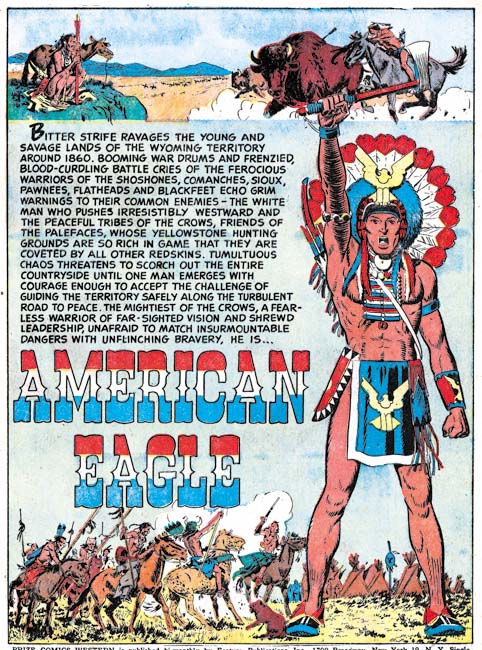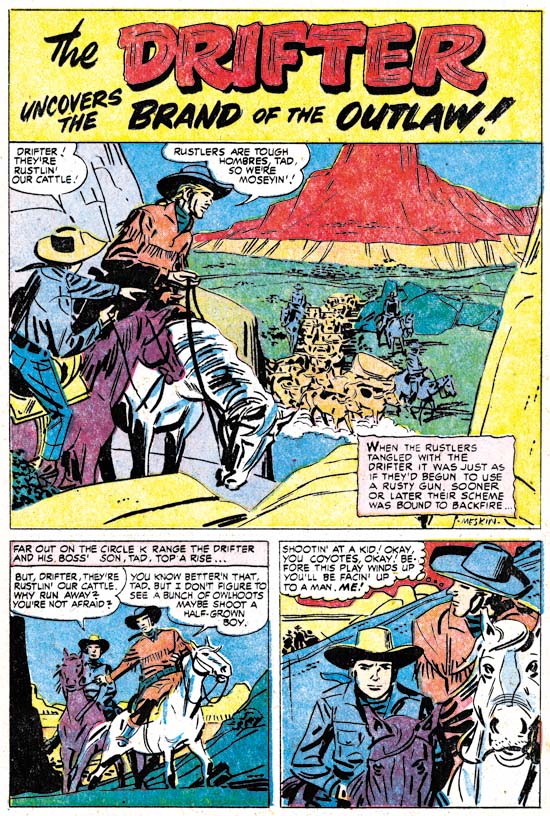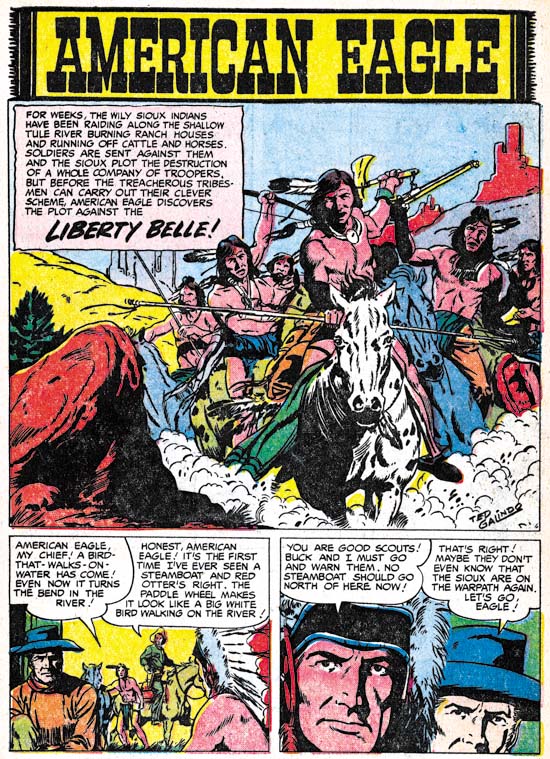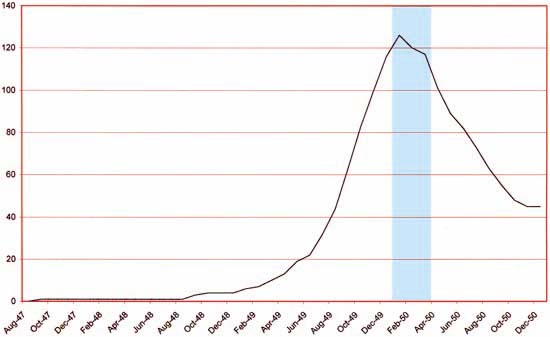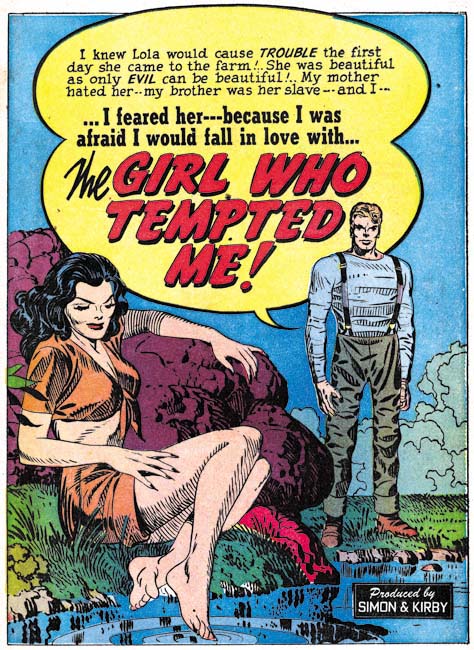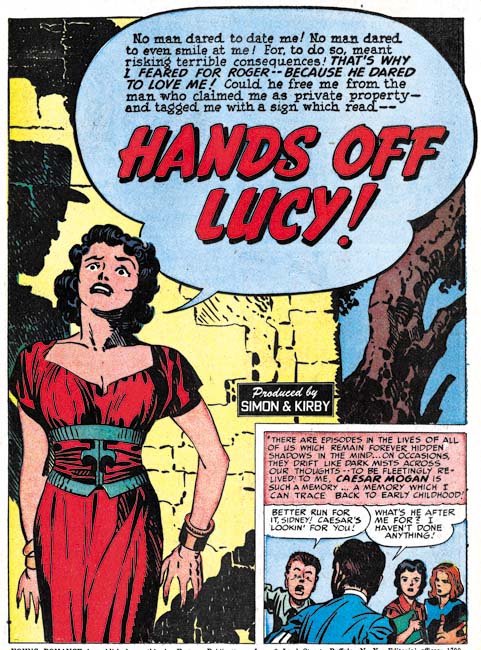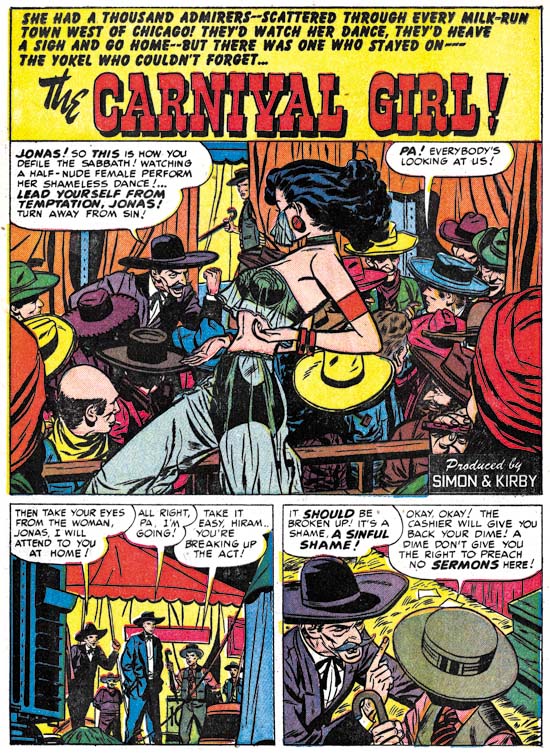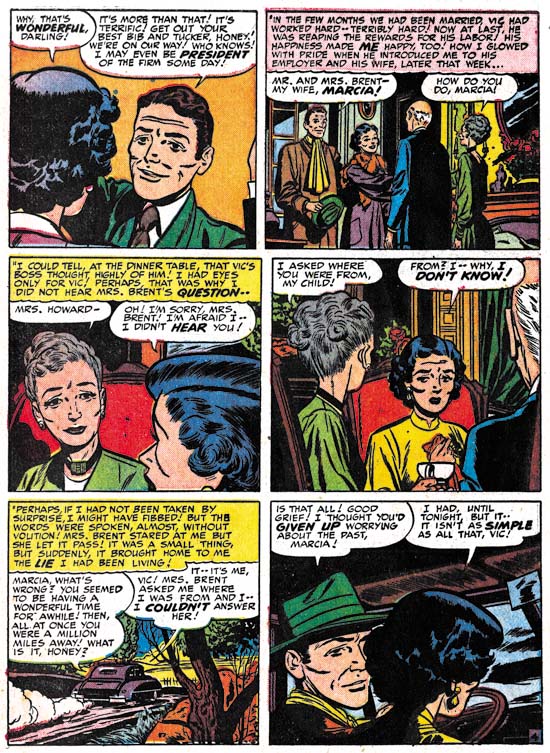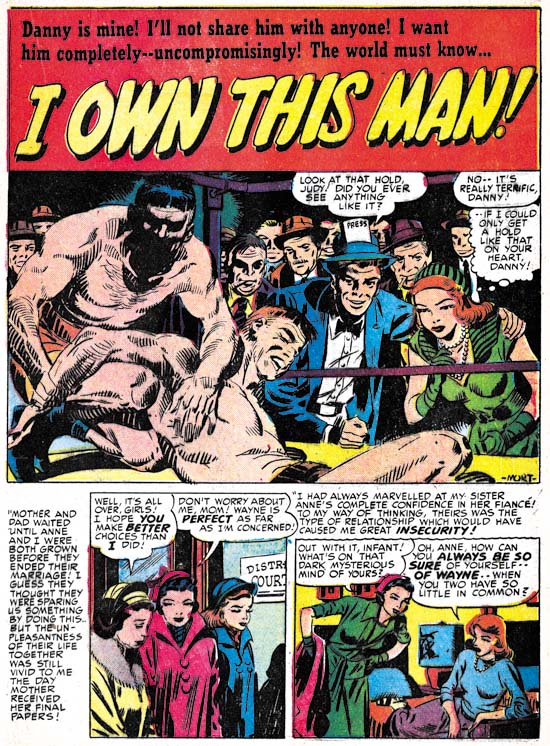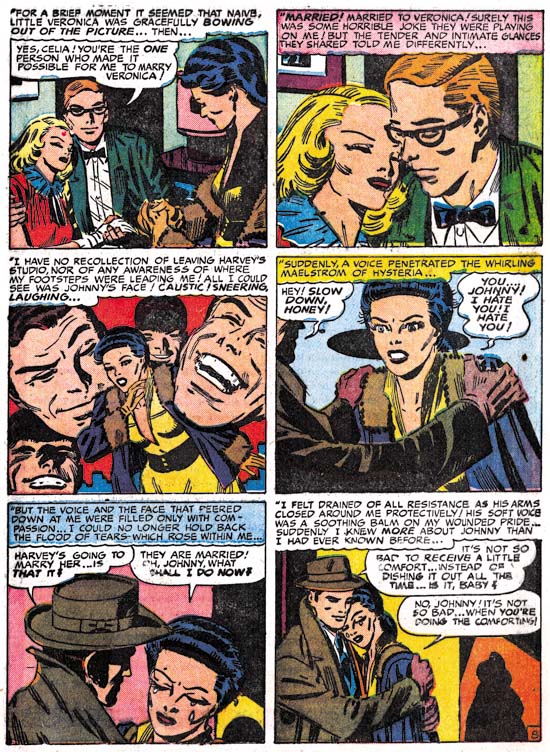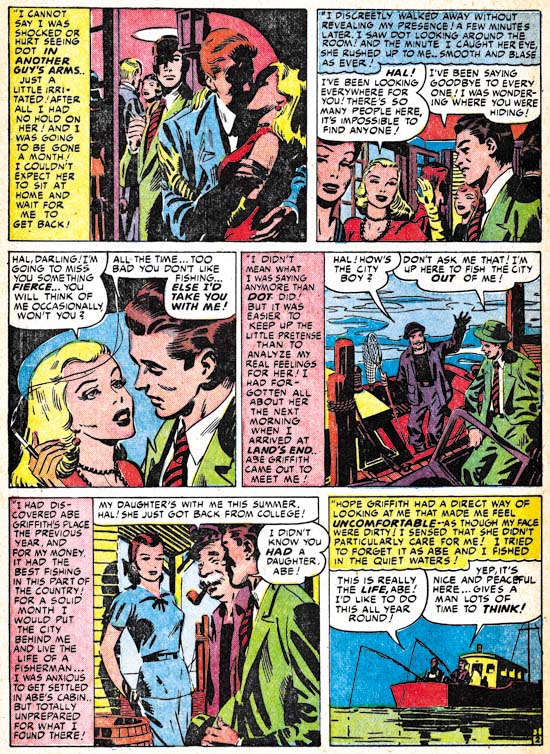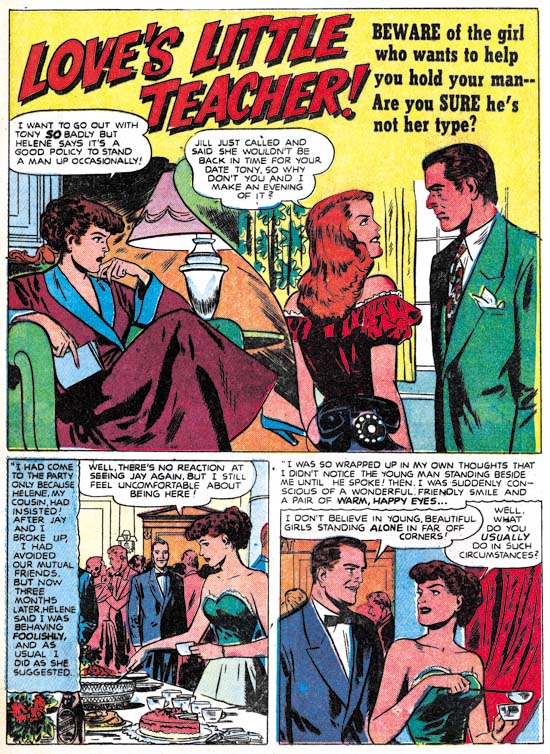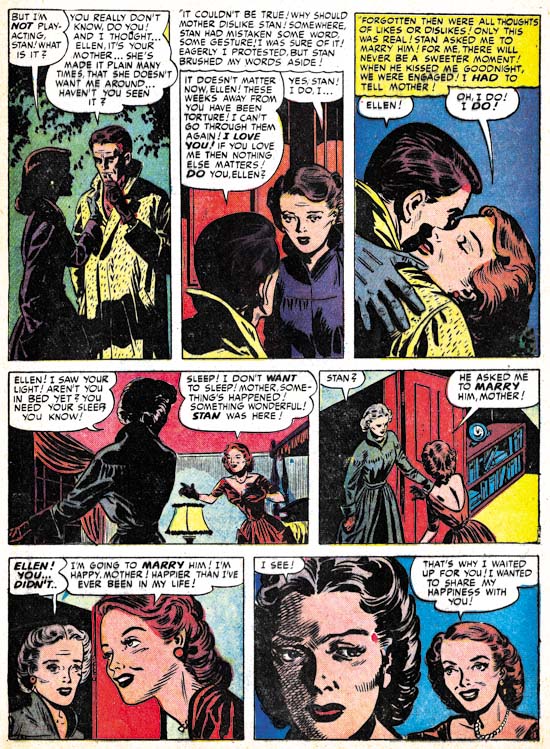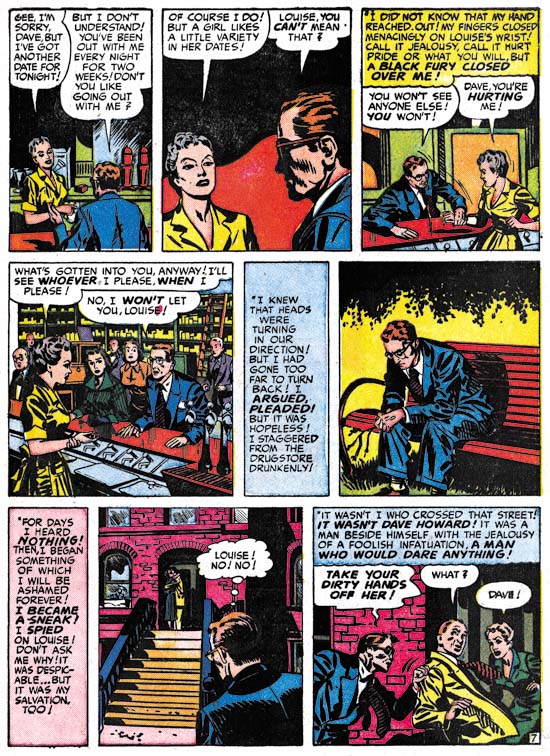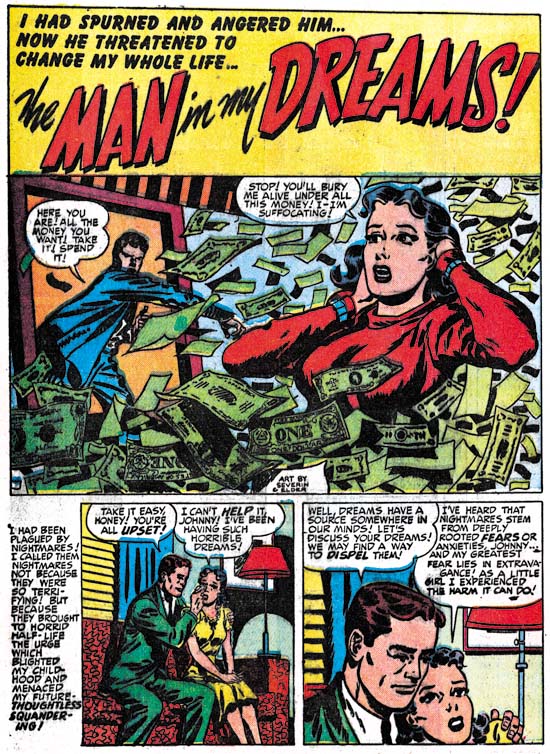(May 1952 – July 1952: Young Romance #45 – #47, Young Love #33 – #35)
 Number of Romance Titles 1947 – 1953 (the period covered in this chapter is shaded in blue)
Number of Romance Titles 1947 – 1953 (the period covered in this chapter is shaded in blue)
Simon and Kirby were now producing 3 monthly titles (Young Romance, Young Love and Black Magic). Black Magic had recently become a monthly (chapter 4 of Little Shop of Horrors) a certain indication that the title was a commercial success. There is also reason to be sure that the two romance titles were also still popular for a reason that will be discussed in the next chapter of this serial post.
Mort Meskin’s output for the period covered in this chapter has dropped significantly from the amazing 104 pages that he supplied for the duration covered in chapter 18. Still with 59 pages, Mort was by far the most productive artist working for Simon and Kirby at this time. The second and third most productive artists were Bill Draut (37 pages) and John Prentice (33 pages). Surprisingly Jack Kirby only takes the fourth position (24 pages of art), beating out only the more minor artists used. Meskin’s decreased output was largely made up by the use of at least four other artists.
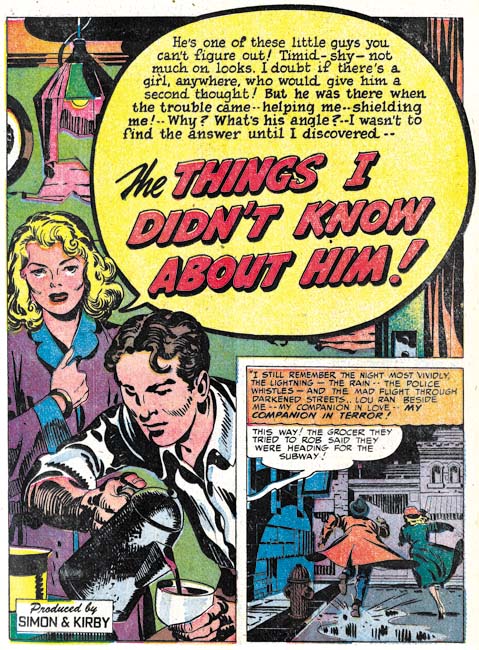
Young Romance #45 (May 1952) “The Things I Didn’t Know about Him”, art by Jack Kirby
There really is nothing to distinguish Young Romance comic from Young Love. The two titles ran the same type of stories using the same mix of artists. The only exception was that there was a distinct tendency for Jack’s art to appear in the flagship title Young Romance rather then in Young Love. During this period Kirby only drew three romance stories and they all appeared in Young Romance. Jack also typically did the lead story when he appeared in one of the romance title. But not always as for example YR #47 where Kirby did a backup story.
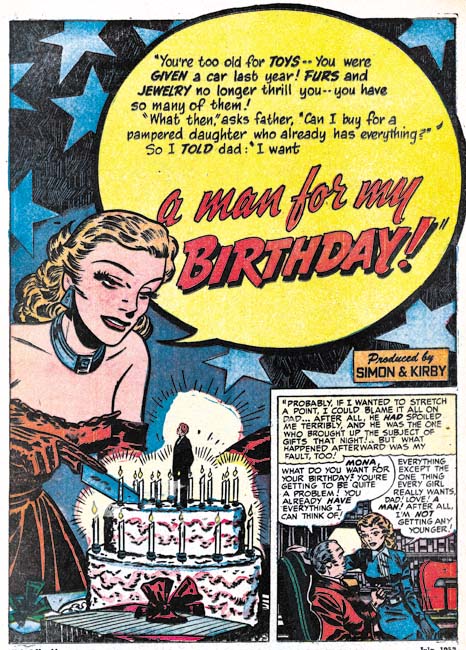
Young Romance #47 (June 1952) “A Man for My Birthday”, art by Bill Draut
While Mort Meskin supplied most of the romance art during this period, it was to Bill Draut that Simon and Kirby generally turned when Jack was not going to draw the lead feature. For this period Bill did 3 lead stories compared to 2 by Jack (with the remaining one done by John Prentice). The splash for the lead story was second only to the cover for grabbing the potential buyer’s attention. Other genre could turn to action to capture the viewer’s interest but that really was not appropriate for romance. Among the studio artists, Bill was second only to Kirby in providing the splash with visual clues and nuanced emotions that took the place of action.
“A Man for My Birthday” is listed in the Jack Kirby Checklist as drawn by Kirby and inked by Draut. Without doubt this is in error and Bill Draut did both pencils and inks.
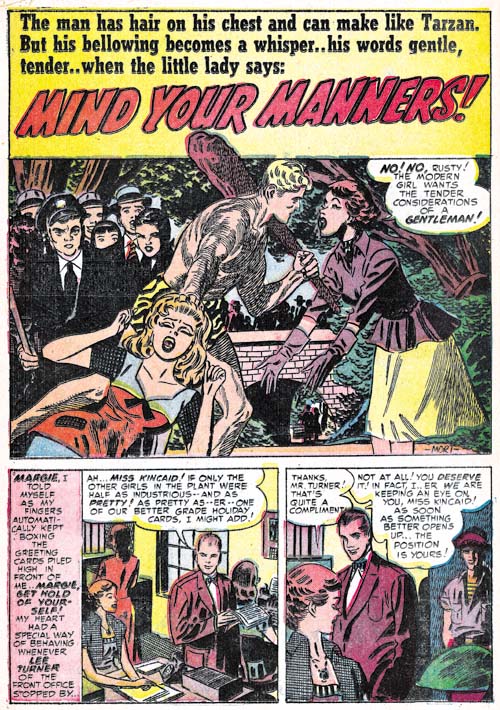
Young Love #35 (July 1952) “Mind Your Manners”, art by Mort Meskin
I like to include at least one image by each of the major artists in my post for this series and I could not resist this one by Mort Meskin. It still is not clear to me whether the studio artists were just following directions from the scripts or did they devise their own compositions. I will return to this subject below, but here I would like to say that I have noticed that humor shows up in splashes by Meskin more often then any other artist with “Mind Your Manners” as a great example.
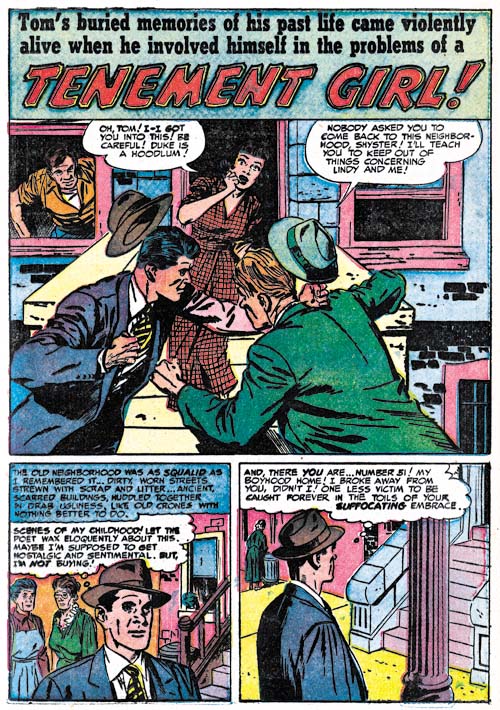
Young Romance #47 (June 1952) “Tenement Girl”, art by John Prentice
Action is not an often a component of romance comics, that is except for those by Kirby. Still it does show up in Simon and Kirby productions from time to time. I wanted to provide another example of a fight scene by John Prentice. Of course Jack Kirby was a master at the slugfest, but his fight scenes were done quite differently from the one in “Tenement Girl” leaving little doubt that John was not working from a Kirby layout.
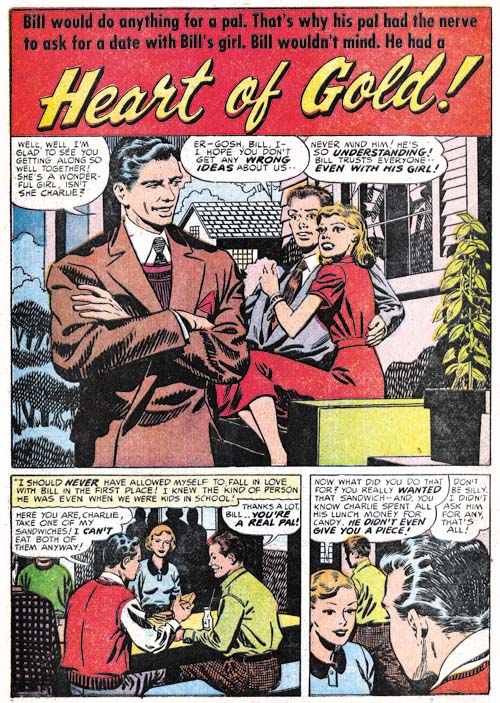
Young Love #35 (July 1952) “Heart of Gold”, art by George Roussos
While George Roussos did some substantial work for Black Magic he was generally relegated to short pieces in the romance titles. Frankly this is understandable because George’s art tended to be a bit crude which worked well with the horror genre but detracted from love stories. However Roussos would occasionally get a more substantial romance piece with “Heart of Gold” the only work for this period that was greater then 2 pages. This story is the best romance work that Roussos has done so far and is actually quite nice. Perhaps George was getting a helping hand from Meskin, some of the faces look in part like Mort’s. I believe the primary reason for the improved appearance of the art is the use of a sparser inking. There is an exception to the lighter inking and that is for the man in the foreground of the splash. Note the shoulder blots and the use of picket fence crosshatching (Inking Glossary). These inking mannerisms are usually not found in worked in Roussos inking but they are typical Studio Style techniques. I suspect Joe Simon has stepped in improve the splash. But the rest of the splash seems to be inked by Roussos. Note particularly the inking of the background trees, a mannerism I do not believe I have ever seen in the Studio Style.
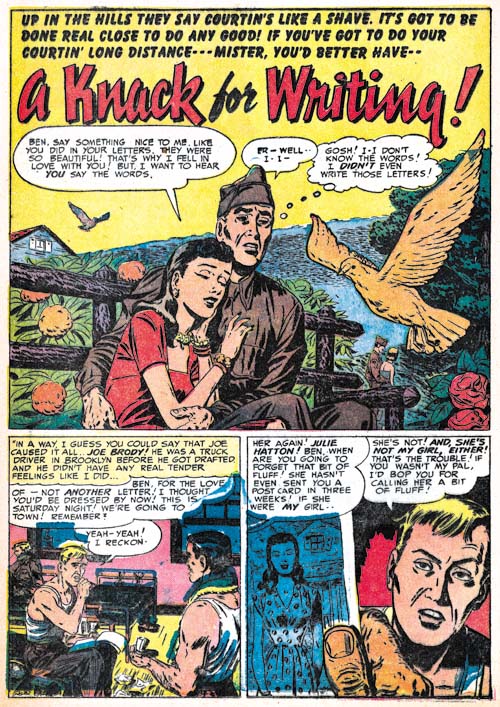
Young Romance #46 (June 1952) “A Knack for Writing”, art by unidentified artist
There are 4 features, two of which are full stories, done by the same artist in the period covered by this chapter. This amounts to 17 pages of art; not a lot of work but enough to be a significant contribution. Further this artist had a story in Young Love #32 which was covered in the previous chapter. So it would really be nice to be able to identify who the artist was but unfortunately I have not much headway. One possibility is that this work was done by Al Eadeh, an artist that also did some work for Simon and Kirby back in 1949. At Ger Apeldoorn’s suggestion I have look at some scans of the artist’s work in Atlas Tales but either the image resolution was too low or the subject matter too different so that I was unable to come to any conclusions.
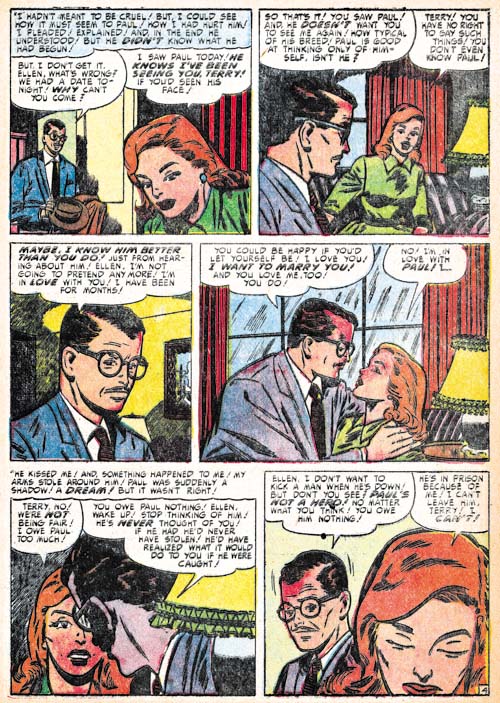
Young Romance #46 (June 1952) “This Is My Punishment”, art by unidentified artist
Another artist that appears at this time is represented by a single work. I provide a story page because I felt that the splash did not adequately represent his style. I have to say there is something very familiar about this style but I am unable to say why.
Added 8/28/09: In the comments Ger Apeldoorn suggested Bill Walton and without doubt he is correct.
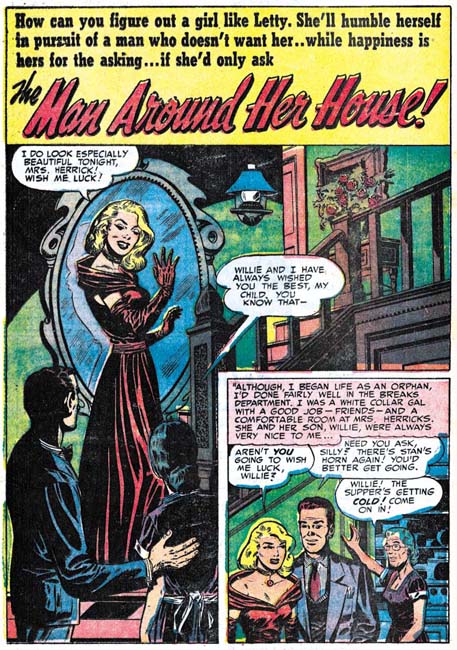
Young Love #33 (May 1952) “The Man around Her Home”, art by John Severin?
“The Man around Her Home” also has a familiar look to it but in this case I can say why. Some of the men (but not all) look like they were done by John Severin. There are differences between the art in this Young Love story and the work Severin was then doing in Prize Comics Western. Perhaps this was just the effect of a different genre or inker. Severin has not appeared in a Simon and Kirby production since November 1950 but he was very active in Prize Comics Western.
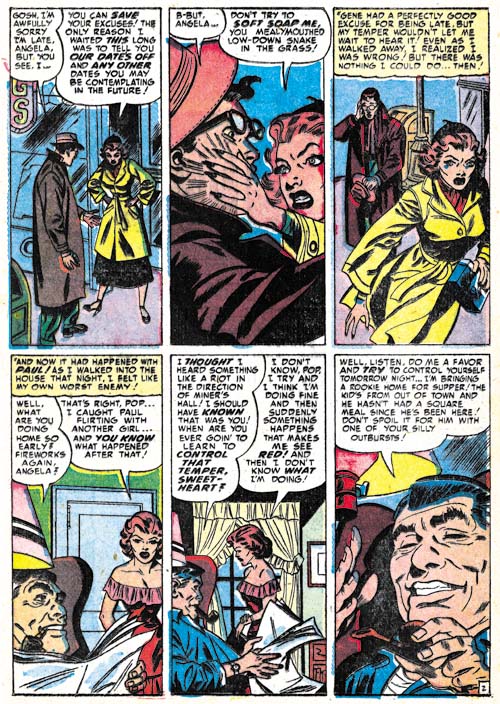
Young Love #33 (May 1952) “Temper, Temper” page 2, art by Ross Andru
Ross Andru, who provided a single story for Young Love #26 (October 1951), returns to do two more features. While Andru was a talented artist who did excellent romance art he only did occasional work for Simon and Kirby. We will see him again, under different circumstances, in 1954.
I have chosen a story page for an example of Andru’s work because it has the unusually panel layout of 2 rows with 3 panels per row resulting in tall and narrow panels. Among Simon and Kirby productions this layout was first seen to be used by Leonard Starr in romance work from 1949 and 1950. More recently it has shown up in work by first Mort Meskin and, then George Roussos, and now Ross Andru.
There is a reason I am particularly interested in this panel layout other then the chance it provides to compare how different artists work with such narrow panels. When I began studying Simon and Kirby one of the declarations that some Kirby experts made was the Jack supplied layouts for other artists. However when I examined the various artists’ graphical story telling techniques with those used by Kirby I found little to support that supposition. Unfortunately such comparisons are very subjective and there were always others who disagreed with my observations. But panel layouts are more cut and dry and difficult to dispute. So when a particular panel arrangement appears in different artists but not in the work drawn by Jack himself, it is pretty good evidence that Kirby did not do the layouts. After all you would expect that Kirby would use the same type of panel arrangements for his own work as well as any layouts he supplied.
But Kirby was not the only boss in the studio, there was Joe Simon as well. Joe has often said that he provided layouts to artists. This is well documented with later comics such as the Fly for Archie (where Joe’s collection includes some layouts that Joe Burgos did (Carl Burgos does the Fly) but that does not necessarily mean that it was true throughout Joe’s career. Unfortunately it is not possible to compare the layouts of Joe’s own drawing with that by other studio artists because Joe had not done any published art since the “48 Famous Americans” one shot for J. C. Penny in 1947. Now, however, we have seen this unusual panel layout first appear in work by Meskin, shortly followed by Roussos and now Andru. While it seems reasonable Meskin could have picked up the layout himself and Roussos copied it from him, I find it harder to accept that Andru, who did not actually work in the studio, independently picked up the panel arrangement. So I am now considering the possibility that it was Joe that started to use it in layouts supplied to other artists. This is by no means a “slam dunk”, just something I will be considering as I continue working on this serial post.
As I said above, Simon provided layouts to artist later in his career. The layout that Joe had Burgos do were very rough sketches including rough balloons. Joe used a somewhat different layout technique for Sick. There Simon provided the artist with inked panel borders and finished lettered balloons but without even sketches for the art. Either of these techniques could have been used during the Prize year (assuming Joe was in fact supplying layouts).
Chapter 1, A New Genre (YR #1 – #4)
Chapter 2, Early Artists (YR #1 – #4)
Chapter 3, The Field No Longer Their’s Alone (YR #5 – #8)
Chapter 4, An Explosion of Romance (YR #9 – #12, YL #1 – #4)
Chapter 5, New Talent (YR #9 – 12, YL #1 – #4)
Chapter 6, Love on the Range (RWR #1 – #7, WL #1 – #6)
Chapter 7, More Love on the Range (RWR #1 – #7, WL #1 – #6)
Chapter 8, Kirby on the Range? (RWR #1 – #7, WL #1 – #6)
Chapter 9, More Romance (YR #13 – #16, YL #5 – #6)
Chapter 10, The Peak of the Love Glut (YR #17 – #20, YL #7 – #8)
Chapter 11, After the Glut (YR #21 – #23, YL #9 – #10)
Chapter 12, A Smaller Studio (YR #24 – #26, YL #12 – #14)
Chapter 13, Romance Bottoms Out (YR #27 – #29, YL #15 – #17)
Chapter 14, The Third Suspect (YR #30 – #32, YL #18 – #20)
Chapter 15, The Action of Romance (YR #33 – #35, YL #21 – #23)
Chapter 16, Someone Old and Someone New (YR #36 – #38, YL #24 – #26)
Chapter 17, The Assistant (YR #39 – #41, YL #27 – #29)
Chapter 18, Meskin Takes Over (YR #42 – #44, YL #30 – #32)
Chapter 19, More Artists (YR #45 – #47, YL #33 – #35)
Chapter 20, Romance Still Matters (YR #48 – #50, YL #36 – #38, YB #1)
Chapter 21, Roussos Messes Up (YR #51 – #53, YL #39 – #41, YB #2 – 3)
Chapter 22, He’s the Man (YR #54 – #56, YL #42 – #44, YB #4)
Chapter 23, New Ways of Doing Things (YR #57 – #59, YL #45 – #47, YB #5 – #6)
Chapter 24, A New Artist (YR #60 – #62, YL #48 – #50, YB #7 – #8)
Chapter 25, More New Faces (YR #63 – #65, YLe #51 – #53, YB #9 – #11)
Chapter 26, Goodbye Jack (YR #66 – #68, YL #54 – #56, YB #12 – #14)
Chapter 27, The Return of Mort (YR #69 – #71, YL #57 – #59, YB #15 – #17)
Chapter 28, A Glut of Artists (YR #72 – #74, YL #60 – #62, YB #18 & #19, IL #1 & #2)
Chapter 29, Trouble Begins (YR #75 – #77, YL #63 – #65, YB #20 – #22, IL #3 – #5)
Chapter 30, Transition (YR #78 – #80, YL #66 – #68, YBs #23 – #25, IL #6, ILY #7)
Chapter 30, Appendix (YB #23)
Chapter 31, Kirby, Kirby and More Kirby (YR #81 – #82, YL #69 – #70, YB #26 – #27)
Chapter 32, The Kirby Beat Goes On (YR #83 – #84, YL #71 – #72, YB #28 – #29)
Chapter 33, End of an Era (YR #85 – #87, YL #73, YB #30, AFL #1)
Chapter 34, A New Prize Title (YR #88 – #91, AFL #2 – #5, PL #1 – #2)
Chapter 35, Settling In ( YR #92 – #94, AFL #6 – #8, PL #3 – #5)
Appendix, J.O. Is Joe Orlando
Chapter 36, More Kirby (YR #95 – #97, AFL #9 – #11, PL #6 – #8)
Chapter 37, Some Surprises (YR #98 – #100, AFL #12 – #14, PL #9 – #11)
Chapter 38, All Things Must End (YR #101 – #103, AFL #15 – #17, PL #12 – #14)


